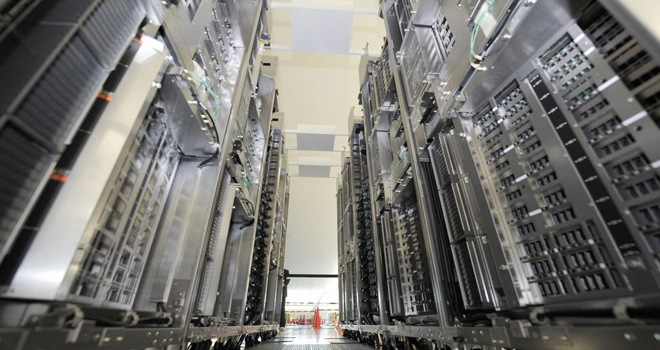Finally, some good news for Japan.
On Monday, an international group of academics who track the increasing speeds of supercomputers released their latest list that shows that Japan’s ‘K’ supercomputer is now the world’s most powerful.
The supercomputer, built by Fujitsu, is capable of performing more than eight quadrillion calculations per second (8.2 petaflops), making it three times faster than the Tianhe-1A, the Chinese supercomputer that previously held the top position. K is also more powerful than the next five systems on the list combined.
That’s the equivalent of hooking up a million desktop computers. The Japanese machine actually uses half a million processors, said Professor Jack Dongarra of the University of Tennessee, a computer science professor who compiles the list with Hans Meuer of the University of Mannheim, Germany, and Erich Strohmaier and Horst Simon of NERSC/Lawrence Berkeley National Laboratory.
K is located at the Riken Advanced Institute for Computational Science in Kobe, Japan.
The ranking of the world’s most powerful 500 supercomputers is based on how fast they can run a standardized mathematical equation.
Unlike the Tianhe-1A and several other leading supercomputers, the Fujitsu supercomputer doesn’t rely on graphics processors to boost its performance, making writing software for the system easier, Dongarra said in an interview.
Such powerful computer systems consume huge amounts of power. K consumes the highest total amount of power, yet it is also the most energy-efficient system on the list, according to the professors.
All of the top 10 supercomputers in the world achieved petaflops performance — the United States has five of those computers, Japan and China have two and France has one.
“But the other machines on the list, they have much less computing power and fewer processors in them” than the Japanese supercomputer, Dongarra said.
China’s Tianhe-1A performs calculations at 2.6 petaflops, making it the world’s second-fastest supercomputer. A Cray supercomputer called Jaguar at the U.S. Department of Energy’s Oak Ridge National Laboratory is ranked number three at 1.75 petaflops.
Scientists expect supercomputing performance to improve by a factor of 100 in just seven years if computer chips’ power requirements continue to decline.
Supercomputers have become important in the scientific community for running simulations.
Designers of aircraft and other kinds of machinery run simulations of the vehicles under stress, for example. And climate scientists use them to predict the weather.
The point is that ever faster supercomputers can crunch bigger sets of data more quickly and accurately, said Dongarra.
“These computers help us drive innovation and industry, they help drive defense,” he said. “We’re going to be able to design better combustion engines, better reactors and we’ll be able to make more accurate predictions about the climate — every area of science today is touched by high-performance computing.”






